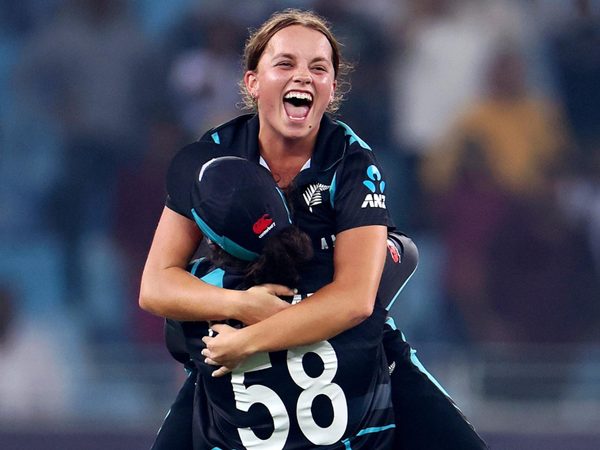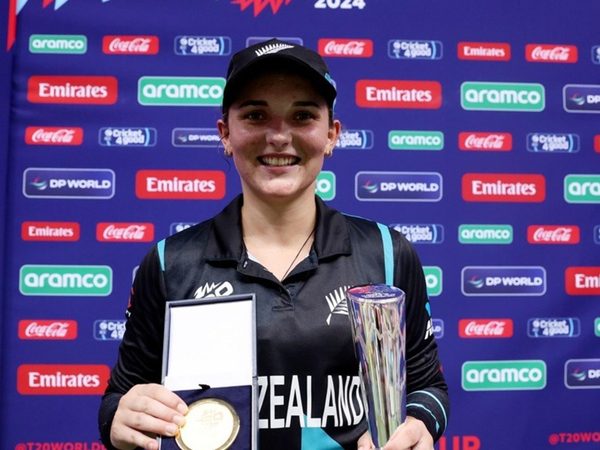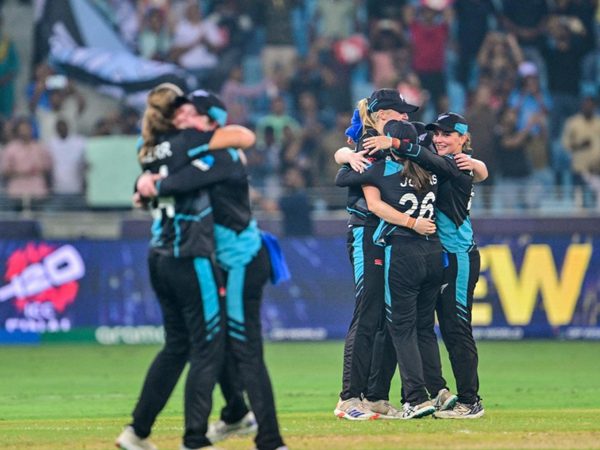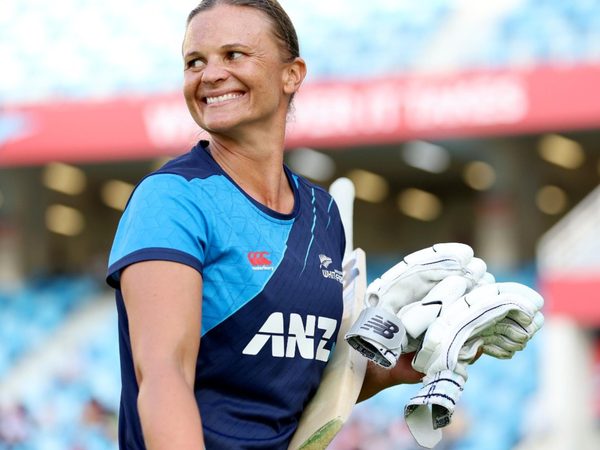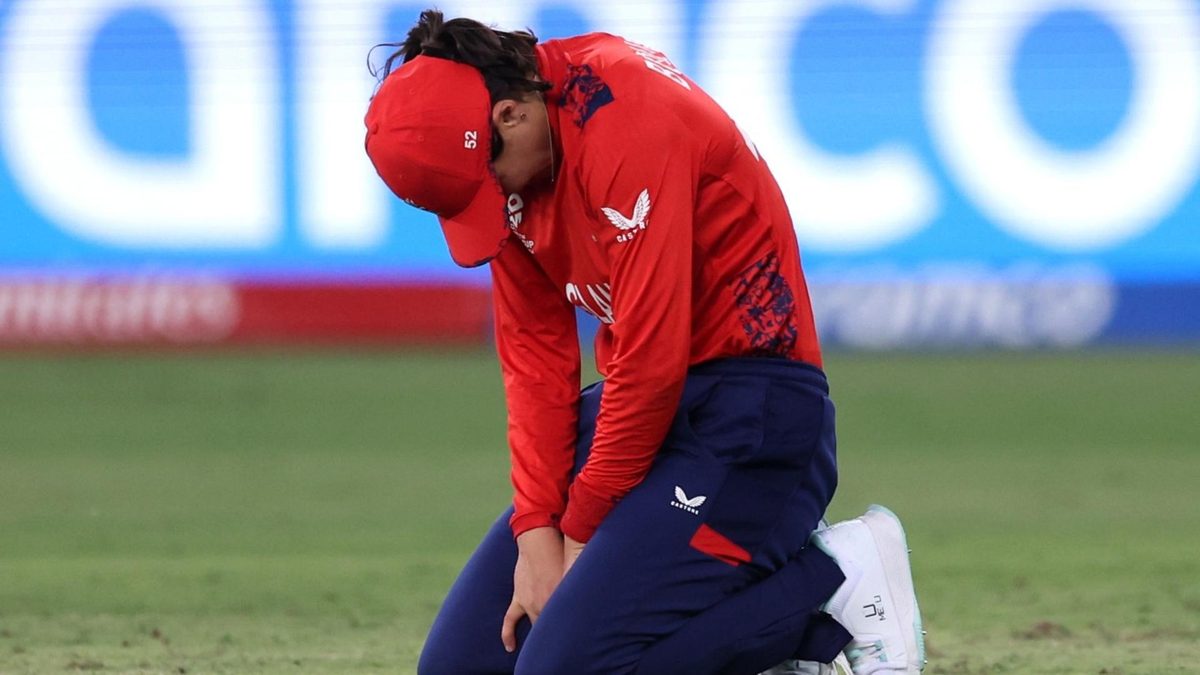
England have proved they're a side who can beat any team in the world on their day, but why do they fall to pieces so often under pressure?
There was an age for Alice Capsey to settle under the ball once it came off the top edge of Qiana Joseph's bat. Perhaps that was the problem, too long to look into the lights, too long to think about what the commentators would say, or what her teammates wouldn't, if she dropped it. If that's what was going through her head as she watched the ball fall straight down towards her, those thoughts would have been amplified by about a million when the ball bounced off her fingers and bobbled onto the turf.
It's not fair to single out Capsey. There have been too many catches that have gone down in this tournament to count, and more players have probably dropped sitters than haven't. Sophia Dunkley had already given Joseph a let off nine balls into the innings, and by the time it went down, it was probably already too late. Dottin and Joseph had pulverised England in the powerplay, and by the end of the sixth over had scored 67 runs - comfortably the most of any team in any match in the tournament. It also made England's 34-2 at the same point look pitiful.
Nevertheless, Capsey's drop was the final nail in the coffin, and epitomised a wider problem for England to which the solution isn't clear. They're simply not very good under pressure.
Everything that could have possibly gone wrong for England went wrong against the West Indies. Their top-order collapsed, Maia Bouchier skying a catch to extra-cover having gone nowhere for 19 balls, with Capsey run out going for a suicidal single two overs before. Reliance on their ever-dependable duo of Nat Sciver-Brunt and Heather Knight went out the window when Knight limped off injured with eight overs to go. But even then the pair benefited from marginal lbw calls going England's way.Of all those who came in after her, only Sophie Ecclestone scored at more than a run a ball at a crucial stage of the innings.
With Knight off the field in the chase, they opened with pace from both ends - which was dispatched, not helped by mistakes in the field - and Ecclestone was taken out of the attack after the seventh over. Her two overs at that point had been the most economical of the innings.
None of this should take away from the brilliance of West Indies. They saw the opportunity, the parameters clear, and took it. All they had to do was win, all England had to do, seemingly, was not lose.
It was the same scenario in the last T20 World Cup, although after England had qualified for the semi finals that time. They bossed their group, winning every game by a comfortable margin and had already secured their place in the semi-final ahead of their last group clash against Pakistan. One win away from the final, they conceded 97 runs in the last 10 overs of South Africa's innings, mistakes in the field sending Katherine Sciver-Brunt seething. In the chase, after reaching 53-0 off the first five, they lost two wickets in three balls, before their, on paper at least, strong batting depth failed them again.
There are also parallels to draw from the women's Ashes last year. In the closest game of that series, the second ODI, at which point England had a genuine chance of pulling off the greatest comeback of all time, no one was able to stay with Nat Sciver-Brunt to finish the job. There's similar that can be said about the Test a few weeks prior, when the drop of Alyssa Healy in Australia's second innings, as well as England's collapse on the fourth evening were crucial.
Even going back as far as 2020, India advanced to the final of another T20 World Cup after a washout in the semi because they topped their group and England didn't. If it hadn't been for a narrow loss against South Africa, in which with three overs to go South Africa needed 33 runs with two new batters at the crease, England would have topped their group and been playing in the other semi-final.
The other factor that makes this weakness England have as soon as pressure is applied harder to solve, is the fact that they they're bad at it. Over the summer, with two low-intensity series their only preparation for the tournament, Jon Lewis described throwing in curve-balls into the series to better ready his side for the intensity which they had crumbled under last time out. Those included Knight sitting out a game and leaving Sciver-Brunt in charge to simulate the exact scenario England were faced with today in Dubai.
"The biggest thing that came out of that World Cup (2023) that we're still working on is dealing with pressure moments," Lewis said ahead of the tournament. "We weren't particularly well connected on the field and our senior player group in particular, they weren't able to communicate well enough at the right time... I think we're a more well-equipped cricket team than we were two years ago to go an tackle the World Cup."
You can never simulate the exact conditions of a knockout scenario, and it's an overused cliche that the best players thrive in that environment. These are England's best players, and most of them don't. There will be post-mortems which will highlight the inconsistency of England's top order, and why their world-beating spinners didn't fire in the way they were predicted to. But the biggest issue is the one that's hardest to fix, even if it is fixable at all.
Follow Wisden for all cricket updates, including live scores, match stats, quizzes and more. Stay up to date with the latest cricket news, player updates, team standings, match highlights, video analysis and live match odds.

